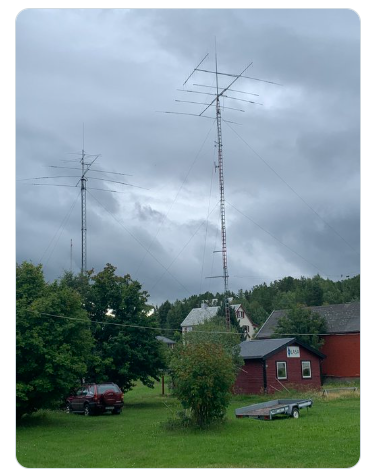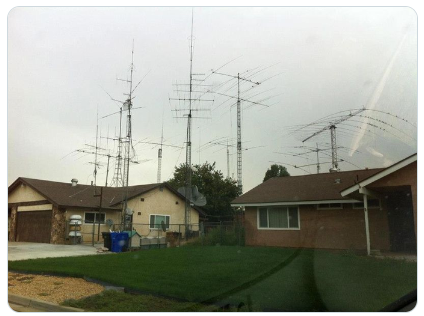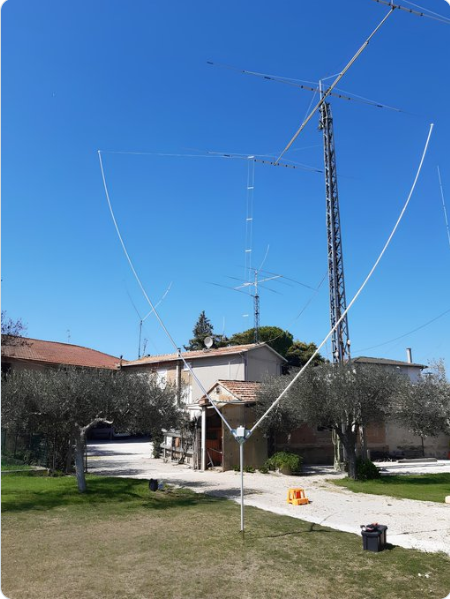


My earlier Ham life, way back in the 70s, was in an area with no antenna restrictions and I never gave them much thought.
I set the hobby aside long ago for career and family reasons. Eventually retirement happened and we moved from snow country to sun country. A year or so after moving to The Villages in Florida in 2020 the ham bug bit hard and I became aware of the area’s antenna restrictions. They basically say “no antennas of any type.” It is very understandable that large or grotesque antenna structures are out of place in most neighborhoods and can be detrimental to property values. I agree whole heartedly.
Good neighbors
The general consensus of the several hundred hams in The Villages, and their many neighbors, is “out of sight” is generally acceptable, especially “can’t see it from the street.” As I re-started this hobby, I set up a “backyard portable” vertical (Wolf River Coils 17′) I also talked with the closest neighbors about the ham radio hobby and what I was doing. Both thought it interesting and had no objections. One even offered to help. (Thanks Jim!)
For the time being, I’m using “backyard portable” as a way to experiment in search of effective antennas. One might be a candidate for a full time, permanent installation, suitably hidden. The good news is that I’m discovering what works and what doesn’t (and collecting lots of parts from failed experiments). The bad news is needing to set up and tear down every day. I take everything down near nightfall because there are critters in that marsh behind us that will carry anything away that’s not permanently nailed down. That’s OK for POTA, a daytime activity, but I’m missing the opportunity to work all the night owl hams. Tryin’ to fix that … working now to find someone able to crawl the attic and tack up an EFHW wire that has proven worthwhile. (Update: see Noise in the attic?)
A variety of solutions
The Villages Amateur Radio Club, TVARC, has several hundred members, many of which are very active. A recent meeting offered a presentation by 11 members on how they deal with the antenna restrictions. They published the presentation as a PDF here. Beware: it is a sizeable download, 51MB, 92 pages. Prominent among the solutions were flag poles; a bit more on those shortly. Other solutions included nearly invisible wires, attic installations, rain gutters and others.
Flagpoles
There is a provision in the published covenant which says, “The Location of any approved device will be as previously approved by the Developer in writing.” The single “approved device” in The Villages is a flagpole … as long as it is no taller than 22 feet and doesn’t look like an antenna. The real origin of this solution is in a Florida Statute, Chapter 702 Section 304. That law describes the right to display flags. It says nothing of antennas within flagpoles or flagpoles themselves being used as antennas, but does say that HOAs shall not prohibit flagpoles or the display of flags. Read it yourself: Florida Statute, Chapter 702 Section 304
A lot of hams have flagpole antennas. There are several interesting variants. One variant uses a PVC pipe that is large enough in diameter to contain a multi-band vertical, often the popular Hustler 6BTV. Another variant uses a split metal pipe flagpole with a base pipe firmly fixed in the ground but extending only a few feet. Above the ground the metal pipe is electrically separated from base by a PVC core, and the upper part is tuned to the desired band by very broadband tuners. A third variation, that I saw just recently, uses the pole to support one or more nearly invisible external vertical wires similar to the DX Commander. Yet another uses the pole to support very lightweight, barely visible, wires running off in useful directions and lengths. It seems that many flagpole installations, especially the ones that use the metal pole as a radiating element, use remote tuners (hidden in the shrubbery), and I’m guessing that most who use that type of antenna are also running 100 watts or more. I’m not there yet. The obvious place for a flagpole on our property is already occupied, and I’m not at all enthusiastic about needing either high power or a tuner.
I’m not yet ready to install anything permanent in the backyard, or push the boundaries on size and types of structure. In fact, I’m spending a lot of time experimenting and working toward a goal of having a virtually invisible antenna farm available 24/7. My challenge is how to fit HF antennas in small spaces, and how to create efficient antennas that work well within QRP power, 5 watts. Thus, the focus of most articles on this site.
Leave a Reply